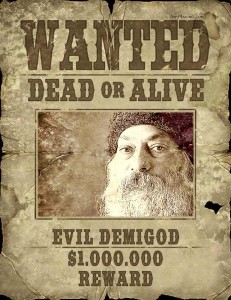Wake-up Sermon, part 1
The essence of the Way is detachment. And the goal of those who practice is freedom from appearances. The sutras say, Detachment is enlightenment because it negates appearances. Buddhahood means awareness. Mortals whose minds are aware reach the Way of Enlightenment and are therefore called Buddhas. The sutras say, “Those who free themselves from all appearances are called Buddhas.” The appearance of appearance as no appearance can’t be seen visually but can only be known by means of wisdom. Whoever hears and believes this teaching embarks on the Great Vehicle and leaves the three realms.
The three realms are greed, anger, and delusion. To leave the three realms means to go from greed, anger, and delusion back to morality, meditation, and wisdom. Greed, anger, and delusion have no nature of their own. They depend on mortals. And anyone capable of reflection is bound to see that the nature of greed, anger, and delusion is the buddha-nature. Beyond greed, anger, and delusion there is no other buddha-nature. The sutras say, “Buddhas as have only become buddhas while living with the three poisons and nourishing themselves on the pure Dharma.” The three poisons are greed, anger, and delusion.
Detachment from form and no form negates any semblance of appearance or non-appearance. Detachment from detachment as no detachment and non, non-attachment, is not something achievable with the Mortal, Mundane-Mind. It can only be discerned through the clear-light of Noble Wisdom. The Wisdom of the Unborn Mind is devoid of the three poisons—greed, anger and delusion. The three-poisons are always demonstrable exclusively through the ken of mortal beings; seeing and condemning and desiring through mortal eyes one is incapable of recollecting that all this is really Mind Itself falling victim to Its own no-self aggrandizement. Yet, Buddha’s do not outright eliminate the three poisons—if they did that would be giving them undue recognition, thereby only firing-them up for more misfortune. Buddhas are Mindful that they are always lurking around, yet even surrounded by them they only nurture their Bodhi-being through the pure light of the Buddhadharma.
Whoever realizes that the six senses aren’t real, that the five aggregates are fictions, that no such things can be located anywhere in the body, understands the language of Buddhas. The sutras say, “The cave of five aggregates is the hall of Zen. The opening of the inner eye is the door of the Great Vehicle.” What could be clearer?
Not thinking about anything is Zen. Once you know this, walking, standing, sitting, or lying down, everything you do is Zen. To know that the mind is empty is to see the Buddha. The Buddhas of the ten directions” have no mind. To see no mind is to see the Buddha.
To give up yourself without regret is the greatest charity. To transcend motion and stillness is the highest meditation. Mortals keep moving, and Arhats stay still.” But the highest meditation surpasses both that of mortals and that of Arhats. People who reach such understanding free themselves from all appearances without effort and cure all illnesses without treatment. Such is the power of great Zen.
Seeing beyond the skandhas one learns the mystical and imageless language of the Buddhas. Seeing the hall of Zen within the cave of the five skandhas is no-zen Zen—getting beyond this koan opens the inner-dragon-eye that is the hallmark of the Great Vehicle—Dragonyana Zen. Mind is self-empty of no-mind and thus sees the Real Buddha hiding behind the no-buddha buddha.
Having been enamored with Osho in earlier days I was quick to buy-into his notion of “no-mind”. No-mind was his mantra, yet his no-mind was not akin to Huang Po’s realization that “Mind in itself is not mind, yet neither is it no-mind. To say that Mind is no-mind implies something existent.” Osho’s warped understanding of no-mind led many down the path of perdition and adharma; his way was excessively “Dionysian” and it opened the gate to Mara’s playground as his disciples fell victim to his hypnotic despotism, that in effect, released the skandhas with their full fury as many lost sight forever of their True Self…instead favoring the great no-self Beast of their body-consciousness. The final outcome of Osho’s nefarious tale is indeed most sad as many of his disciples are dying horrible deaths—many of them oddly from brain aneurysms.
If only Osho had realized that to give himself-up (i.e., his own excessive and grandiose image) would have been his greatest charity towards his “sannyasins.”
Bodhidharma marvelously states here that the Power of Great Zen is to transcend all notions of motion and stillness—to not become entrapped between them. The best meditation is Pi’kuan—staying prior to both Movement and Stillness. Staying prior to all appearances AND non-appearances is the best medicine that will cure all illnesses sans any form of treatment from without.

